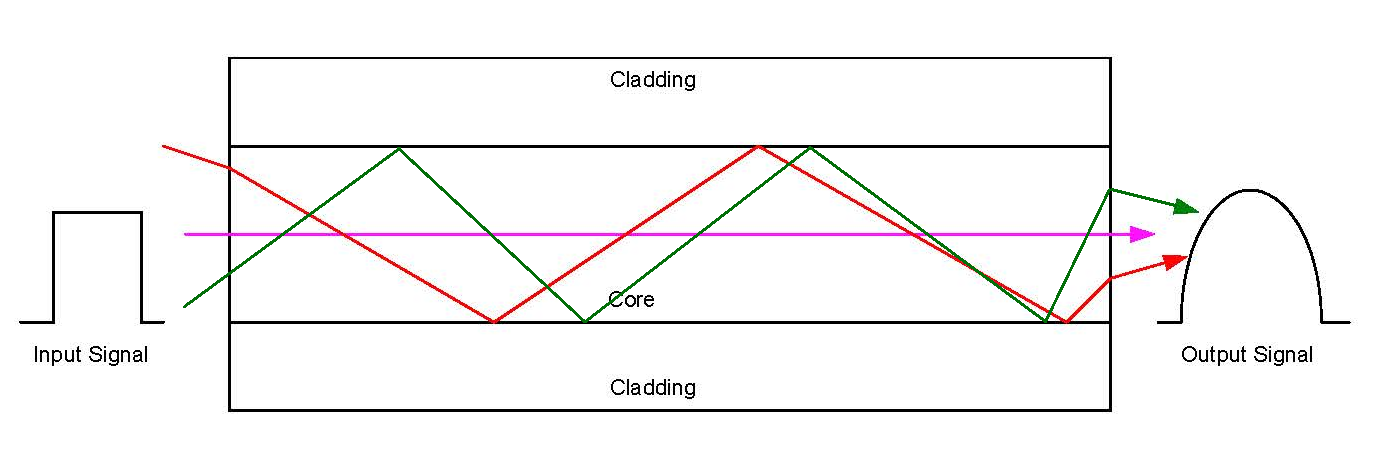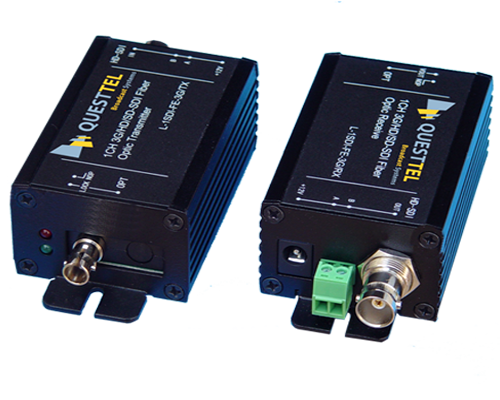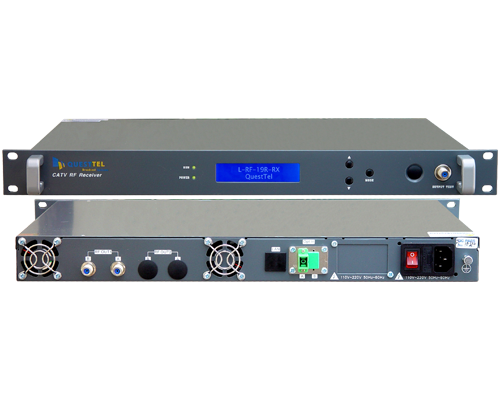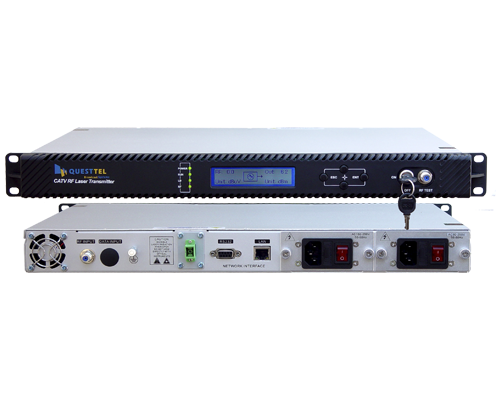Difference between Singlemode and Multimode Fiber
Multi-mode fiber is so named by its large core. On the order of 50µm and 65µm, multi-mode fiber allows multiple rays/modes to couple and propagate simultaneously down the fiber as demonstrated in the picture below. Large core fiber is attractive due to the ease in which light form a source can be coupled into the fiber, significantly reducing the cost of transmitter design and packaging. As will be discussed later, multimode fiber is very sensitive to dispersion, which tends to limit the distance and bandwidth of an optical system.

An input pulse is made up of multiple Modes/Rays. Each of the three rays takes different paths propagating through the core of the multi-mode fiber. As a result the three light rays shown arrive at different times causing broadening of the input pulse. This is known as dispersion and can lead to inter-symbol interference
Single-Mode Fiber ,as the name implies, a single mode fiber only allows one ray/mode to propagate through the fiber core. This is accomplished by shrinking the core of the fiber to dimensions comparable to that of the wavelength being transmitted. Single mode fiber has a core dimension of ~9µm making transmitter coupling much more difficult. Consequentially single mode fiber systems employ higher costing lasers. However, single mode fiber has an advantage of higher capacity/bandwidth and is also much less sensitive to the effects of dispersion than multi-mode fiber. It is also possible to incorporate wavelength division multiplexing techniques to further increase the transmission capacity of a single-mode fiber
QuestTel shall have no liability for any error or damage of any kind resulting from the use of this document.



